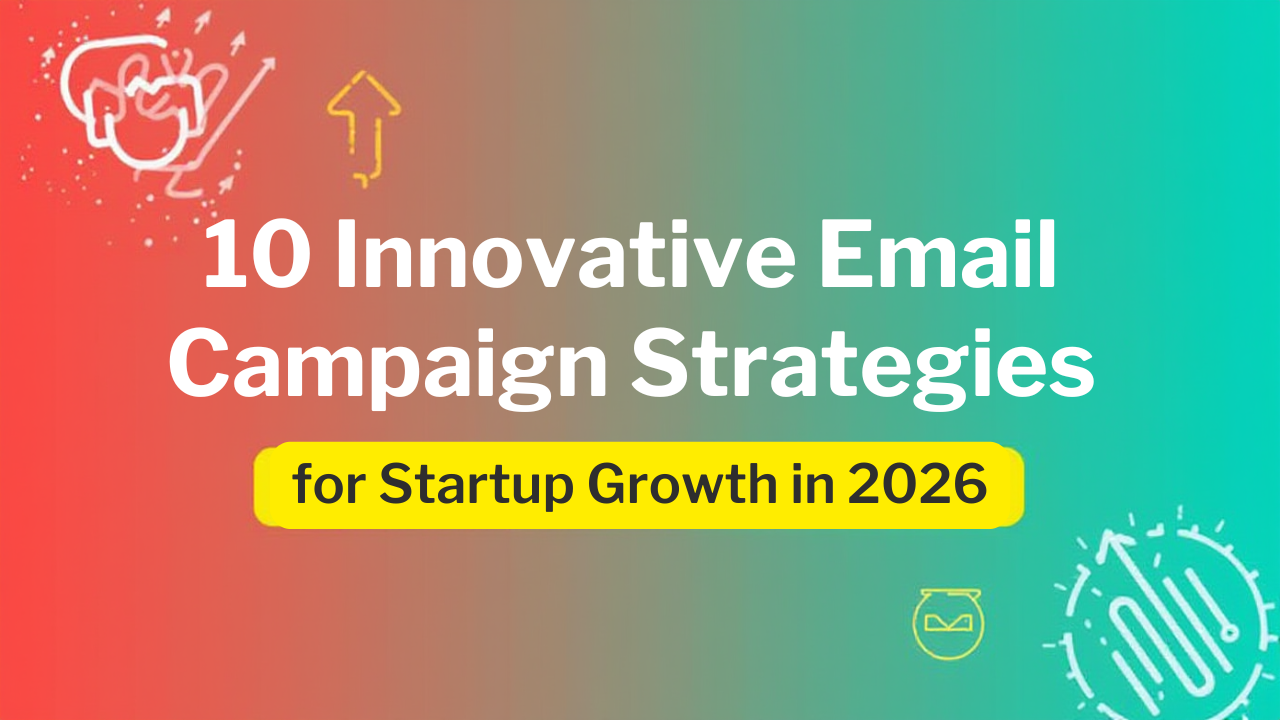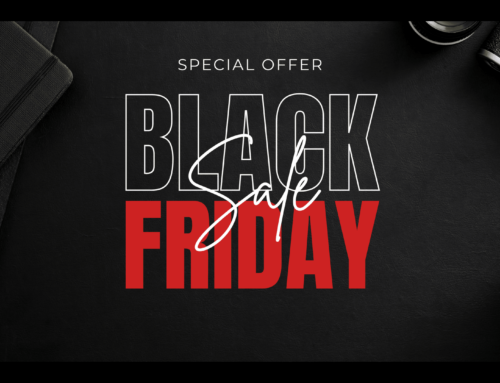Top 10 Innovative Email Campaign Strategies for Startup Growth in 2026
Email marketing has always been one of the most reliable tools for startups to grow their audience, build trust, and generate sales. But in 2026, the landscape looks dramatically different. With the rise of AI, data privacy laws, and shifting consumer expectations, the old “send-and-forget” approach no longer works. Customers now expect personalization, relevance, and genuine value in every message.
For startups, this evolution presents both a challenge and an opportunity. The challenge is cutting through inbox clutter where every brand is fighting for attention. The opportunity lies in using technology and creativity together to build smarter, data-driven campaigns that feel personal. In this new era, startups can compete with large enterprises by using AI tools, predictive analytics, and human-centered storytelling to engage customers more effectively.
Here are 10 innovative email campaign strategies every startup should explore in 2026 to scale sustainably, nurture leads, and stand out in an increasingly competitive digital world.
1. AI-Powered Personalization Beyond the First Name
Personalization has come a long way from simply addressing someone by their name. In 2026, AI allows startups to tailor entire email journeys based on each user’s behavior, purchase patterns, and emotional triggers. Instead of sending a generic newsletter, AI tools can now analyze a customer’s browsing history, predict what they’re most likely to buy next, and automatically generate personalized recommendations.
For example, an AI system can send one version of a product email to repeat buyers highlighting upgrades, while sending an educational or comparison version to first-time visitors. This level of dynamic content creation builds trust and relevance, leading to higher engagement rates. The best part is that even small startups can access these AI capabilities affordably through SaaS email tools like HubSpot, Brevo, Mailtrap, and Mailmodo. The future of personalization isn’t about using someone’s name — it’s about understanding their intent and emotions at scale.
2. Predictive Segmentation Using Behavioral Data
Segmentation has always been key to successful email marketing, but predictive segmentation takes it to the next level. Instead of manually grouping subscribers based on demographics or purchase history, AI now predicts what stage of the buying journey each contact is in. This allows startups to deliver perfectly timed emails that match intent — such as reminders for cart abandoners, discount offers for high-interest leads, or loyalty rewards for repeat customers.
In 2026, predictive models can even estimate churn probability, meaning they can identify users who are about to disengage and send tailored re-engagement content automatically. For startups, this kind of insight is game-changing because it maximizes conversions without increasing ad spend. Predictive segmentation transforms raw data into actionable communication, helping brands send fewer but far more effective emails that deliver real value to each user.
Once these segmented leads are ready to talk to sales, using a lead routing scheduler like Inleado ensures that demo requests are instantly booked with the right rep, reducing drop-off and improving speed-to-lead.
3. Hyper-Interactive Emails for Immersive Engagement
Static newsletters are becoming a thing of the past. In 2026, hyper-interactive emails—those that allow users to engage without leaving the inbox—are gaining massive traction. These include embedded polls, product carousels, videos, and even in-email checkout options. Instead of clicking away to a landing page, subscribers can explore products, submit feedback, or RSVP to events directly inside the email itself.
Startups can leverage AMP (Accelerated Mobile Pages) technology or dynamic email frameworks to create these immersive experiences. The benefit is twofold: users stay engaged longer, and conversion friction drops dramatically. A fitness startup, for example, can allow users to choose their workout plan directly from the email, while an eCommerce brand can showcase “swipeable” product collections. Interactive emails create a mini-website experience that not only delights users but also improves click-through and engagement metrics significantly.
4. Story-Driven Email Series for Emotional Connection
In a world flooded with promotional emails, storytelling is what makes a brand memorable. Startups in 2026 are moving away from transactional emails and embracing story-driven campaigns—multi-part email series that narrate a journey. These could be origin stories, customer success journeys, or behind-the-scenes narratives that humanize the brand.
For example, a sustainable fashion startup might send a 5-part email series titled “From Thread to Thought”, explaining how each collection is crafted ethically. Similarly, a company specializing in tiny house for sale Florida could create a series showcasing the journey from design to delivery, highlighting how each home responds to the state’s unique climate challenges. Each email adds a new emotional layer while subtly highlighting the products.
This storytelling approach helps customers see beyond discounts—it builds loyalty through shared values. By combining emotion with authenticity, story-driven campaigns strengthen brand identity and increase lifetime value in a way that no coupon ever could. To bring that same storytelling power into your presentations, you can use Flipsnack pitch deck maker tool to design professional, interactive decks that communicate your startup’s journey and growth vision with clarity and style.
5. Conversational AI Assistants Inside Emails
By 2026, conversational AI has entered inboxes. Instead of one-way communication, emails now feature embedded AI chat assistants that interact with users in real time. A user can ask questions like “Do you ship internationally?” or “Is there a vegan option?” and receive instant responses—all without leaving their inbox.
For startups, including sex tech startups, this innovation bridges the gap between marketing and customer support. It removes friction and creates a seamless buyer experience. These assistants can also collect data on customer preferences, feeding it back into future campaigns for more accurate targeting. Integrating conversational AI doesn’t just make emails smarter—it makes them responsive, human-like, and adaptive. As customers demand immediacy and convenience, this feature becomes a powerful differentiator for emerging brands.
6. Minimalist Design with Micro-Animations
As inboxes get more crowded, clarity and aesthetics matter more than ever. In 2026, the winning design philosophy for startups is minimalism with motion—clean layouts paired with subtle micro-animations that draw attention without overwhelming the reader. These animations can highlight CTAs, show product movement, or visualize processes.
Minimalist designs improve mobile readability and ensure faster load times. Combined with smart color psychology and concise copy, these layouts make emails feel premium and professional. The key is balance—too much animation feels spammy, too little feels dull. Tools like Figma, Canva, and AI-based design assistants now make it easy for startups to build beautiful, on-brand emails even without in-house designers. Many of these tools also provide ready-to-use design templates that help startups maintain brand consistency while saving valuable design time.In the era of shrinking attention spans, a clean, visually delightful email can be the difference between a click and a delete.
7. Emotionally Intelligent Automation
Automation has always been about timing—but in 2026, it’s also about empathy. Emotionally intelligent automation uses sentiment analysis and behavioral AI to detect customer mood and adjust tone accordingly. If a customer leaves a negative review, the system automatically sends an empathetic follow-up instead of a generic “We’re sorry” email. If someone has been inactive for months, it crafts a warm, personal re-engagement note instead of a cold sales pitch.
Startups using emotional intelligence in automation show customers that they’re seen and understood. This builds long-term relationships instead of short-term transactions. With affordable AI integrations available through CRM platforms, even small teams can now apply emotional data to personalize tone, timing, and offers in real time—turning automation into a more human experience. By pairing these insights with an AI Ad Generator, businesses can craft emotionally resonant ad campaigns that align perfectly with customer moods and motivations, enhancing both engagement and conversion rates.
8. Data-Driven Experimentation with AI A/B Testing
Gone are the days when marketers manually tested subject lines and waited weeks for results. In 2026, AI-driven multi-variant testing handles everything automatically. The system tests subject lines, visuals, CTAs, and copy variations simultaneously, analyzes recipient behavior, and picks winners instantly.
This constant feedback loop allows startups to optimize every campaign in real time, improving open and conversion rates without guesswork. Using employee productivity software alongside AI testing tools can further streamline internal coordination, helping marketing teams execute, analyze, and adapt faster across campaigns. AI testing also eliminates bias, relying purely on performance data. Instead of running one A/B test a week, startups can now run hundreds of micro-tests daily. The result? Faster learning, smarter campaigns, and significantly higher ROI. By embracing AI experimentation, startups no longer need big teams to achieve big results—they just need smart automation and data discipline.
9. Privacy-First Email Marketing
As global privacy laws become stricter, respecting user data isn’t just a legal requirement—it’s a brand advantage. In 2026, privacy-first marketing means transparent opt-ins, clear data usage explanations, and zero manipulation tactics. Startups that prioritize ethical communication build trust faster, especially with digitally conscious consumers. For individuals, protecting personal information is just as essential as protecting brand data. Tools like Aura’s Digital Footprint Checker help you see what personal details are publicly visible online so you can stay secure while engaging with brands you trust.
Instead of tracking pixels or intrusive personalization, brands are turning to zero-party data—information customers willingly share, such as preferences or purchase goals. This honest data exchange leads to more relevant and trustworthy campaigns. Startups that bake privacy into their email strategy from day one position themselves as ethical, modern, and customer-first. In a world where privacy is the new loyalty, this approach pays dividends in both reputation and retention.
10. Lifecycle Automation with Predictive Triggers
In 2026, successful email campaigns aren’t just scheduled—they’re intelligent. Lifecycle automation ensures that every subscriber receives messages aligned with where they are in the customer journey. Predictive triggers powered by AI can detect life events, purchase cycles, or behavioral changes, and send perfectly timed emails automatically.
For example, a SaaS startup can detect when a user is about to reach a usage limit and send a proactive upgrade offer. An eCommerce brand can predict when a customer might run out of a consumable product and send a replenishment reminder. Lifecycle-based triggers turn automation into anticipation. Instead of reacting to customer behavior, startups can now predict it—turning email marketing into a proactive growth engine.
Conclusion: The New Era of Intelligent Email Growth
Email marketing in 2026 is no longer about mass communication—it’s about meaningful, intelligent interaction. For startups, the advantage lies not in sending more emails but in sending smarter ones. The future belongs to brands that combine data, design, empathy, and storytelling to make every email feel human.
By adopting these ten innovative strategies—from AI personalization to emotional automation—startups can scale without losing authenticity. The inbox of the future is not a battlefield but a bridge: a space where technology and trust work hand in hand. The startups that understand this balance will not just grow faster—they’ll build loyal communities that last.


